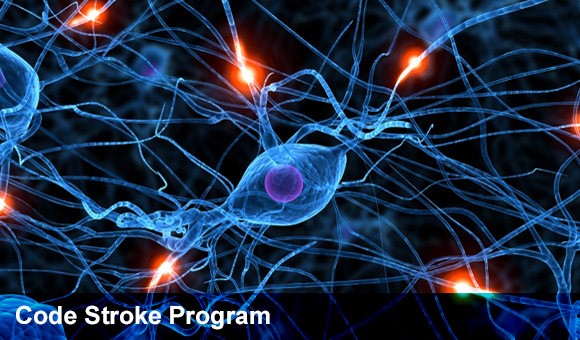
Time is critical in the race to save brain function during an acute stroke. We have developed a “Code Stroke” response team that is ready 24-hours-a-day to quickly evaluate patients and initiate interventions. This innovative process brings together a team of highly-trained neurologists, neuroradiologists, vascular neurologists, and interventionalists who specialize in stroke diagnosis and treatment with emergency department physicians and staff, ensuring the most appropriate treatment is initiated as quickly as possible.
Our highly-trained specialists provide treatment to complex stroke patients throughout the San Gabriel Valley and accept transfers from hospitals challenged to care for these types of cases.
Meet Our Stroke Team
What Happens When I Arrive at the Hospital?
When you come to our Emergency Department and the doctor thinks you may have had a stroke, you might stay in the hospital for treatment. A doctor will meet with you to review treatment choices and create a plan based on your condition.
- Diagnosis – We will determine what happened.
- Evaluation – Doctors will try to determine why and how the stroke event happened.
- Treatment – A treatment plan will be developed.
- Recovery – Focus on how we can help you heal and relearn prior skills (if applicable).
- Prevention – Discuss how we can help stop this from happening to you again.
What Emergency Treatments Are Available for Stroke?
These emergency treatments are time-sensitive procedures and for best results must begin within hours of a stroke. Tests are done to decide if a patient can have and benefit from these emergency treatments.
- Medications: Thrombolytics or “clot busting” medication and antihypertensives may be used to treat acute stroke cases.
- Complex Stroke Treatments: Aneurysm clipping and coiling are procedures where surgeons use tools to stop aneurysm bleeding.
- Endovascular Clot Retrieval: For complex stroke cases, we offer this treatment to open blocked blood vessels up to 24 hours after onset of stroke symptoms.
Stroke Stats
Patients who arrive within the first few hours of sudden stroke signs and symptoms may be treated with clot busting medication known as TNK (Tenecteplase) and/or a clot retrieval device known as Mechanical Thrombectomy. Huntington Hospital’s Stroke patients who are treated with Mechanical Thrombectomy have a greater chance of going home upon discharge when compared to stroke centers within Los Angeles County and across the nation. We offer stroke patients a better chance at recovery.
TNK (Tenecteplase) is a powerful drug used to break up blood clots causing ischemic stroke. The quicker we treat, the better chance our patients have at recovery. The national goal for treatment with TNK is within 60 minutes of arrival to the emergency department. Huntington Hospital is recognized annually for its timely stroke team performance. Our fastest time to treatment with TNK is 6 minutes.
As part of our comprehensive stroke services, we perform elective diagnostic cerebral angiogram procedures in our state-of-the-art interventional radiology suite. Our complication rate of stroke or death within 24 hours of the procedure remains at 0.0%.
| Diagnostic Cerebral Angiogram | Number of Procedures | Rate of Stroke or Death within 24 hours of Procedure |
| 2021 | 71 | 0% |
| 2022 | 152 | 0% |
Patients requiring carotid endarterectomy surgery to remove plaque and debris from the carotid artery are treated by our vascular surgery team. When indicated, this procedure can decrease your chance of having a stroke. Our complication rate of stroke or death within 30-days of elective carotid endarterectomy remains at 0.0%.
| Elective Carotid Artery Endarterectomy | Number of Patients | Rate of Stroke or Death within 30-days of Surgery |
| 2021 Patients with symptoms at time of procedure | 7 | 0% |
| 2022 Patients with symptoms at time of procedure | 3 | 0% |
| 2021 Patients without symptoms at time of procedure | 4 | 0% |
| 2022 Patients without symptoms at time of procedure | 9 | 0% |
 English
English Espanol
Espanol 简体中文
简体中文 Tagalog
Tagalog հայերեն
հայերեն 한국인
한국인 Tiếng Việt
Tiếng Việt فارسی
فارسی русский
русский 日本
日本 عربي
عربي